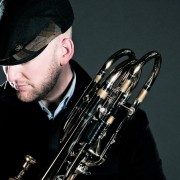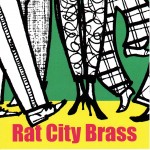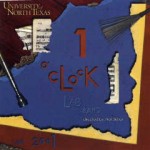Pedagogy
As a music educator, my pedagogical role is two-fold. Regardless of what aspect of music I am teaching (private instrument instruction, ear training, appreciation, theory, history, or rehearsing ensembles), I must teach both content and skills. Skills can include anything from general study techniques to exact fingerings and intonation on a given instrument. Content includes a well-rounded perspective on the music at hand, such as context, environment, and impact on the greater field. My job is to provide information and guidance to students so that they might understand, interpret, and ultimately succeed in achieving their own personal level of musical prowess and/or appreciation.
The means by which those ends are reached must be varied and comprehensive. In order to best serve kinesthetic, visual, and aural learners equally, I include any number of different strategies to enhance the subject matter and excite students about the musical content. Directed listening examples, self-guided research projects, experiential instrument contact, and live performances are just a few examples of what I might require of my students. In my opinion, these are a critical component to the learning process and should not be viewed as supplemental to the standard textbook, but as a necessary part of a curriculum that covers all aspects of learning.
Clearly delineated expectations are crucial to success in instrumental music. Whether they are concrete in nature (i.e. performing of all major scales, two octaves, in 16th notes at mm. 80), or more intangible, such as relaxation and focus exercises, I find that students who understand what is expected of them will live up to these expectations. In order to help define success, I work with my private studio members to help set their own short, mid, and long-term goals. This ensures that they have insight and perspective into what we are hoping to achieve together, rather than dictating what success should be. This is not to say that standards and milestones are not applied to the instrumental musician, but rather that each individual student has different needs, talents, and abilities. It is up to me to understand these needs and nurture these talents to create the most positive musical experience possible. I also find that clear communication of expectations, both verbally and in writing (i.e., a syllabus or notebook) are the best ways to confirm that both teacher and student goals coincide. A written, signed agreement between students and teachers at a higher-level is also an excellent way to make sure everyone is on the same page and is aware of the same set of expectations.
Finally, I am a firm believer in product over process, especially when it comes to performance. Simply knowing the proper techniques and processes is simply not enough when it comes to music. If those techniques are not integrated into the art of music making, both the performer and audience lose out. In order for a student to reach their full potential, they must master the techniques and apply these techniques in the creation of his/her art. Techniques are a means to an artistic end– an art that must be practiced and applied daily. Only when technique becomes second nature will truly artistic music be conveyed.







